1: Explain to the group that you are going to introduce an imaginary character called ‘Sam’. Give them the following information about Sam: Sam is ** years old [choose the age relevant to the group] and is a child in your group or class at school. Sam is being bullied.
2: Divide the group into small groups of 4-5, to discuss the following questions:
Who is Sam?
What is happening to Sam?
Where is this taking place?
Why is this happening?
3:Ask each small group to create a freeze-frame showing a scenario that they are discussing. It could be the bullying itself, or a scene before or after. Set ground rules before they set the frame, e.g. no physical contact.
4: Groups show their freeze frames to each other. First one group shows and the rest of the class discusses what could be happening while the group stay frozen. Then they come out of role and explain what was happening.
5: Ask the groups to consider what advice they would give to ‘Sam’, if Sam was someone they knew. During discussion, identify and explore with children the underlying values of how and why being picked on/bullied/harassed happens. Why are certain differences targeted? What wider pressures might be at work here? (e.g. gender and sexual stereotypes, poverty).
6: Vital here is to shift the discussion away from blaming or shaming the ‘bullies’ ‘victims’ or ‘bystanders’ and locate each scenario with the wider social, cultural and economic pressures that underpin all bullying cultures.
7: Pair up the groups in the class. Invite one pair to return to their original freeze frame and invite the other pair to create a freeze frame that shows some of the external pressures acting upon the original scenario. Share and discuss as above. What can we do?
8: Distribute A4 paper and coloured pens to each child. Invite the group to consider how they can lend a hand to prevent bullying cultures in their peer groups. Ask each participant to draw around their hand on the paper. Invite them to write an action they can do or attitude they can have that will help prevent bullying on each finger. Some examples of statements are: ‘Be proud of my identity’; ‘Respect Equality’; ‘Stand up for rights’; ‘Report bullying if I see it’, ‘Celebrate difference’ and ‘Speak Up’.
9: Children can then decorate their hands and put their completed hand pictures on a table or on the floor. Invite the group to look at the different actions on the hands and consider: how can these actions change our community or school? Which ones can we action now?
Invite and create one large hand from all the little hands to represent how addressing bully cultures and standing up for our rights is never achieved alone and affects us all. We are more, together.
Extension Activity
Visit another class in your school, or a neighbouring school. Share what you’ve been doing.
Make a silent statue from all the freeze frames (i.e the bullying scenario freeze frame to communicate what’s happening, and the external pressures freeze frame to communicate why it’s happening).
Each group could place sticky-notes with how members of the frame are feeling or the pressures they are facing on their body for others to read and ask questions about.
Pass around the ‘helping hands’ to the audience. Say, ‘will you give them a helping hand?’. As they give the hands to the frozen statues, it breaks the freeze.
Reflecting on the process, and using the helping hands, discuss the what, why and how of bullying cultures, and where children can access help and support if any of the issues that have been discussed in the session have concerned them.






